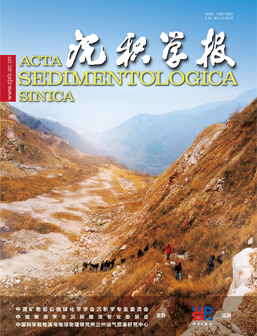Depositional Facies and Sequence Stratigraphy of The Lower Ordovician Successions in Northern Guizhou Province
doi: 10.14027/j.issn.1000-0550.2023.101
- Received Date: 2023-08-01
- Available Online: 2023-11-07
-
Key words:
- carbonates /
- ramp model /
- depositional cycles /
- depositional sequences /
- relative sea-level fluctuations /
- paleogeographic configuration
Abstract: The Great Ordovician Biodiversification Event (GOE) is the result of the interaction between marine environments and organisms. The analyses of sedimentary facies and depositional sequences of the Ordovician carbonate platform can reveal its development and evolution and the history of sea level fluctuations, which can provide a sedimentary background and isochronous stratigraphic framework for exploring the spatio-temporal distribution characteristics and the evolution of coeval organisms. Based on the measurement of the outcrop section and microscopic observation, the Lower Ordovician (Tongzi and Honghuayuan formations) successions of the Piaoertian section in northern Guizhou Province were investigated to recognize the lithofacies types, construct the depositional model, identify the sequence stratigraphy, and explore the controls of depositional evolution. Results are as follow: (1) Ten types of lithofacies were identified and further grouped into two depositional belts (or associations) in a carbonate ramp system. The depositional system was further divided into non-skeletal grain-dominated and skeletal grain-dominated end members for the Tongzi and Honghuayuan formations, respectively. (2) These lithofacies are vertically stacked into asymmetrical, meter-scale, shallowing-upward open-marine depositional cycles for both Tongzi and Honghuayuan formations. (3) In view of vertical facies and cycle stacking patterns, three and one half third-order depositional sequences (Sq1~Sq4) were distinguished, which are defined by II sequence boundaries (lithologic transition surfaces). Sq1~Sq3 are full sequences that consist of lower transgressive (TST) and upper regressive (RST) packages, but Sq4 only contains TST. (4) The depositional evolution and sequence development of the Lower Ordovician of the Piaoertian section were mainly controlled by relative sea-level oscillations of different orders and paleogeographic configuration. The relative sea-level oscillations of different orders dictated the vertical development of facies; the paleogeographic configuration primarily defined the spatial distribution of depositional belts (or associations).
| Citation: | Depositional Facies and Sequence Stratigraphy of The Lower Ordovician Successions in Northern Guizhou Province[J]. Acta Sedimentologica Sinica. doi: 10.14027/j.issn.1000-0550.2023.101 |






 DownLoad:
DownLoad: